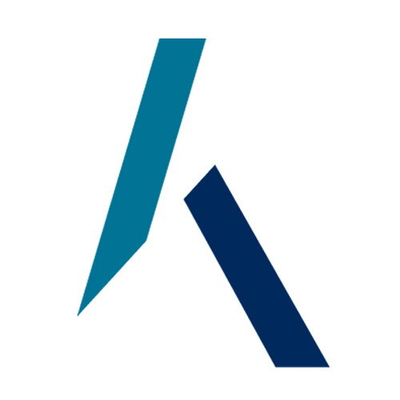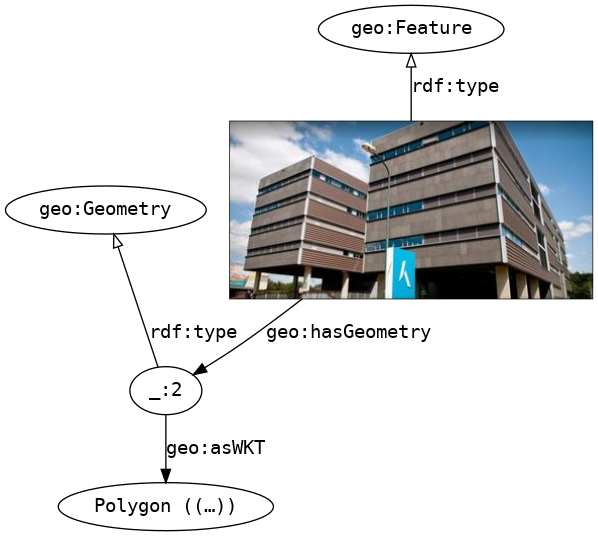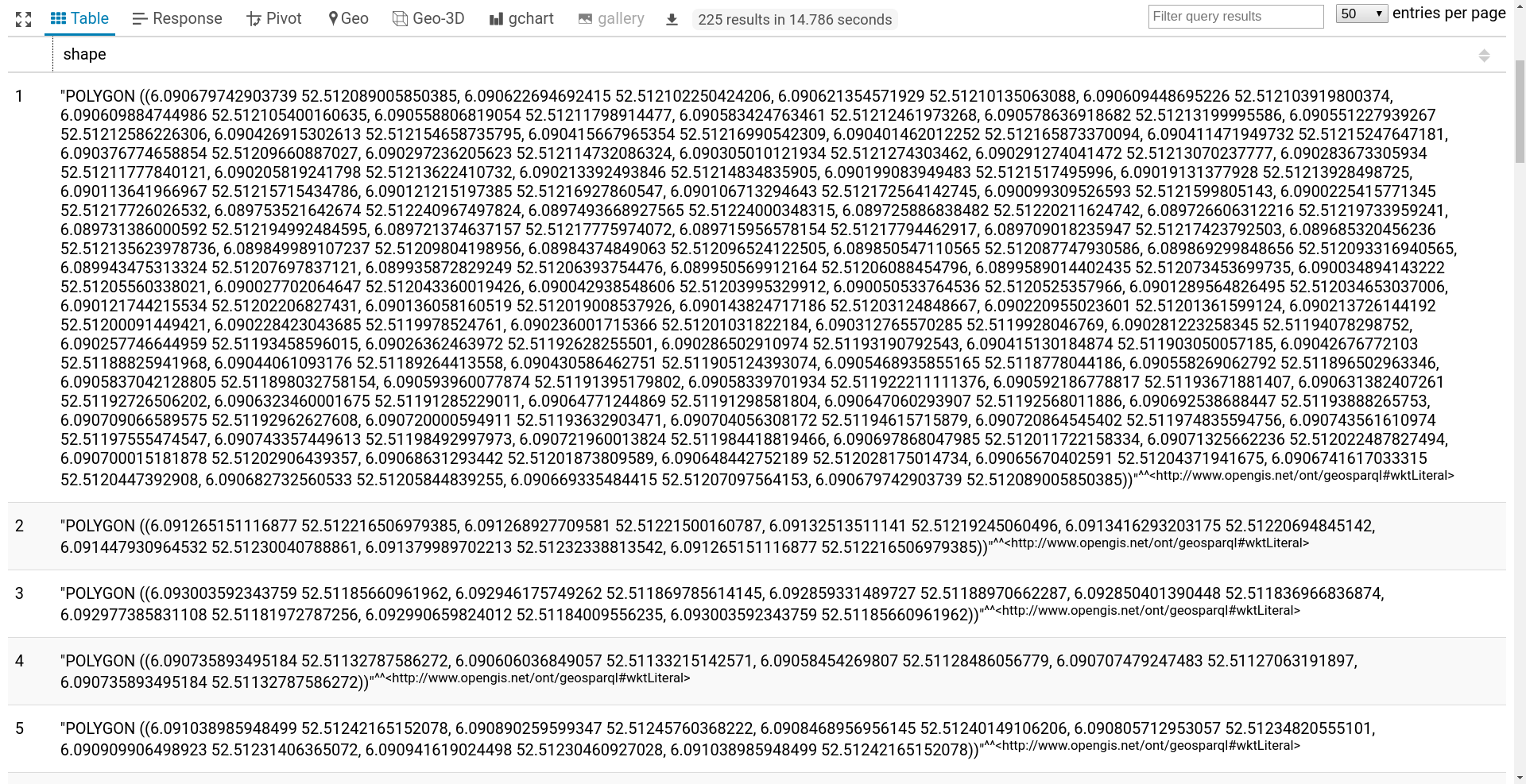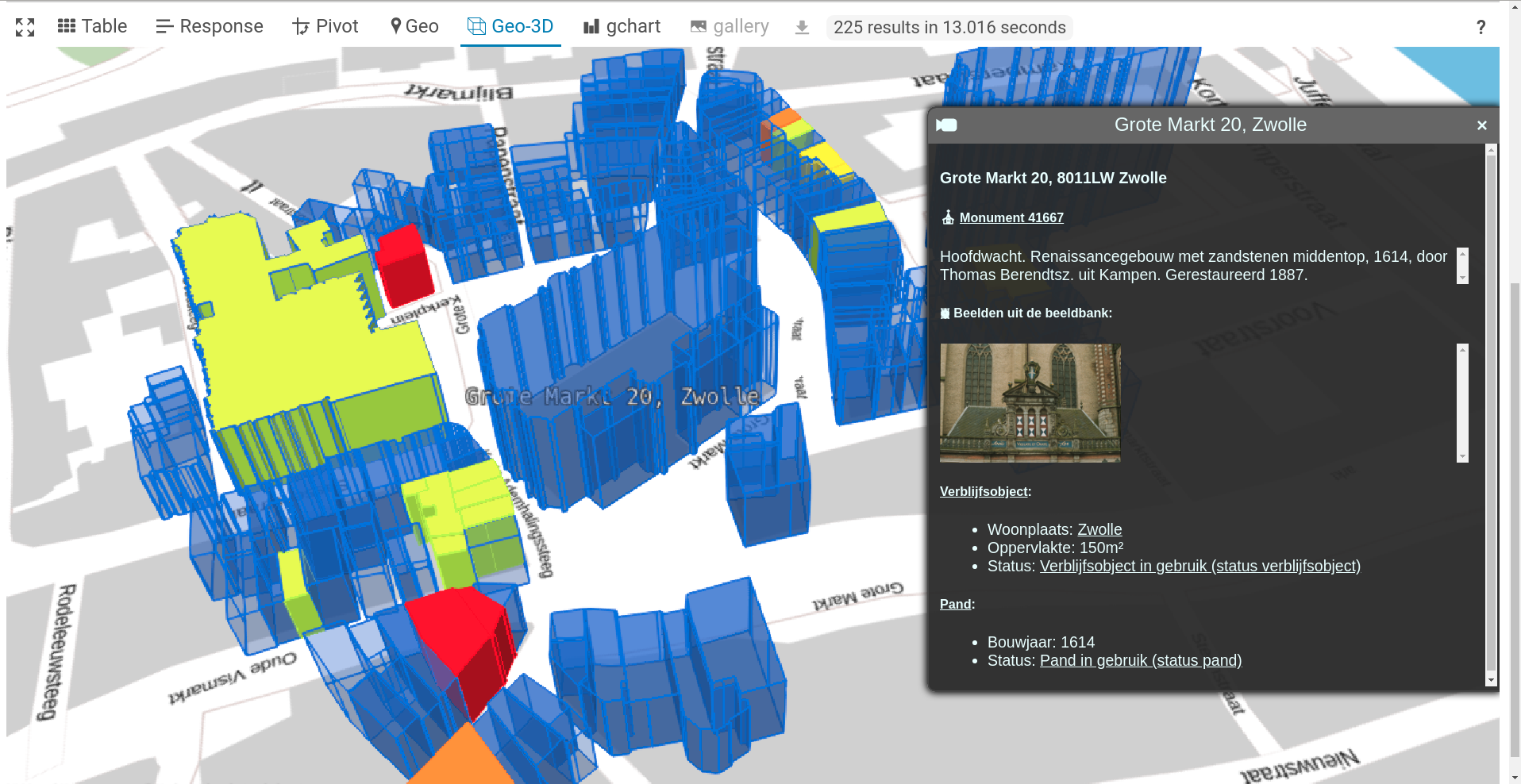Adding 3D Visualization to the SPARQL Query Loop
August 30th, 2018
Erwin Folmer
(e.j.a.folmer@utwente.nl),
Wouter Beek
(w.g.j.beek@vu.nl)

Benefits of 3D
- Interpretability
- We are used to interpreting and interacting with a 3D world.
- Expressiveness
- The z-axis gives an additional dimension to plot (statistical) data on.
- Muliple perspectives
- Allows for different views for the same objects (e.g., building).
Cadastre use cases for 3D SPARQL
- Displaying one building with multiple businesses and appartments in it.
- Drone no-fly zones contain height information.
- Emergency services must determine the reachability of an appartment within a building.
REPL: read-eval-print-loop
A well-known concept from programming, applied to query writing:
- Read
- Process a user-entered query.
- Evaluate
- Calculate the result set for the user query.
- Show the result set to the user.
- Loop
- The user inspects the results and changes the query.
REPL: Read (1/2)

REPL: Read (2/2)

REPL: Evaluate
3D support in triple stores:
- Most stores do not implement 3D GeoSPARQL syntax, but some do.
- Most stores have bad performance for 3D geo-spatial queries, but some have good performance.
- Some stores change the 3D data merely by loading it, e.g., turning it into 2D data.
- Some stores cannot load larger 3D shapes.
- Commercial triple stores are not necessarily better than FOSS (if fact: they are often worse).
REPL: Print

REPL: Print

Examples of 3D SPARQL Queries
Cadastre buildings in context
Queries the following datasets:
- Cadastre Buildings Registry (BAG)
- Chamber of Commerce (KvK)
- Cultural Heritage images (RCE)
- Dutch Monument Registry (RCE)
- Energylabels (RVO)
Energy labels 🗲
Queries the following datasets:
- BAG (KDP Productie)
- RVO energielabels (KDP Labs)
Monuments ⛪
Queries the following datasets:
- BAG (KDP Productie)
- RCE beeldbank (KDP Labs)
- RCE monumenten (KB endpoint)
Chamber of Commerce 🏪
Queries the following datasets:
- BAG (KDP Productie)
- Kamer van Koophandel bedrijven (KDP Labs)
Number of businesses 🏬
Queries the following datasets:
- BAG (KDP Productie)
- CBS buurten (KDP Labs; binnenkort KDP Productie)
3D rooftops
Multiple appartments within one building
3D variable bindings
Implemented by binding variables that follow specific naming patterns, compatible with SPARQL 1.1.
| Concept | Variable name |
|---|---|
| Shape | ?var |
| Colour | ?varColor |
| Complex label | ?varLabel |
| Extrusion | ?varHeight |
| Offset | ?varZ |
| Simple label | ?varName |
Future challenges
- Display textures on 3D shapes
- Store and retrieved detailed 3D models (BIM)
- More 3D data as Linked Data, e.g., rooftops, underground structures
Thank you for your attention!
- Email: e.j.a.folmer@utwente.nl
